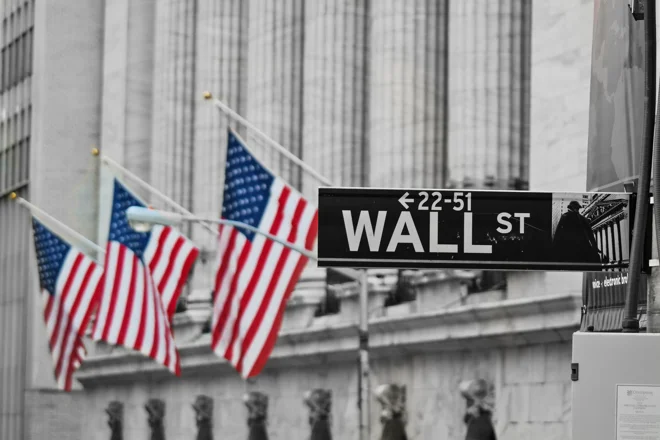In The Economic Consequences of the Peace, published in 1919, John Maynard Keynes predicted that stiff war reparations would lead Germany to financial instability, with economic and political repercussions across Europe and the whole world. Rather than peace, today we have war on Europe’s fringes, and steep sanctions on Russia. All this impacts the global economy via rising commodity prices, supply-chain strains and input shortages, and exposure to Russia and Ukraine. The euro area is more exposed to Russian oil and gas, and to Ukrainian producers of parts, components, food ingredients and fertilisers. The rest of the world is less vulnerable and remains relatively resilient, but not 100% immune. With things still so uncertain, the best an economist can do is thinking in terms of scenarios. Their mechanics, drawing from historical episodes and past cycles, are useful to get a sense of why we expect – still supportive – fundamentals to reassert themselves over our tactical investment horizon (6-12 months) especially outside of Europe, where the war impact should be more moderate. Our most preferred regions, tactically, remain the US (via equities) and emerging markets/Asia (via equities and credit).
Scenario #1 | Protracted instability: Full-scale occupation, local resistance and high geopolitical risk. Sanctions remain in place and, initially, intensify. There’s a global slowdown at first, with the euro area entering a short-lived recession. Elevated energy costs keep inflation high and volatile, with some partial normalisation further down the line. The Fed and the Bank of England continue to normalise policy, but more slowly, while the ECB turns more dovish. There’s more spending on defence and on boosting domestic energy generation including via renewables, as well as on reducing reliance on fossil fuels and Russia. We think the probability of this scenario is medium-high.
Market implications: Uncertainty stays but, over time, diminishes somewhat relative to today. While there’s no full resolution and volatility remains elevated, the war ends (at least officially) and the world economy adjusts to sanctions. In this scenario, we’d expect a slight reduction in risk premia relative to the status quo: mildly positive for risk assets, especially for equities ex Europe (i.e., the US, Asia and Latin America); mildly negative for safe-haven bonds (yields rise gradually).
Scenario #2 | Negotiated resolution: Partial annexation of Ukraine and/or some other compromise such as military neutrality. Instability initially moderates. The most severe sanctions are eased. There’s a moderate global slowdown and possibly a mild recession in the euro area followed by trend growth. Inflation peaks at a high level this year and then begins to normalise, though slowly. Central banks, give or take, normalise policy as expected, but don’t overdo it. Fiscally, there may be some measures to cushion the energy impact, extra financing for defence and a moderate fiscal impulse. We think the probability of this scenario is high to medium-high.
Market implications: Uncertainty diminishes relative to today. This scenario would imply a meaningful reduction in risk premia relative to the status quo: positive for risk assets (especially Europe ex UK equities); negative for safe-haven bonds (yields rise) and inflation protection (inflation moves past the peak); negative for gold (uncertainty gets priced out).
Scenario #3 | Broad-based conflict: The war extends to other countries. NATO, potentially, gets involved. Sanctions become full embargoes. The global economy enters recession, possibly a very deep one in the euro area. We’d expect a massive commodity-driven inflation spike initially, but plunging inflation subsequently as the global economy shrinks. Monetary tightening off the table across the major central banks; they all cut rates (though marginally, given their low level to begin with) and resume, or even widen, their asset purchases. This scenario would envisage new rounds of large-scale fiscal stimulus. We think its probability is medium-low.
Market implications: Uncertainty increases relative to today. This leads to sharply rising risk premia relative to the status quo: negative for risk assets, especially in Europe; negative for peripheral sovereigns in the euro area (rising default risk) and perhaps also negative for European core sovereigns (strong fiscal spending raising debt levels and war damage), though it could also be positive/less negative if central banks step in to a great extent; positive for safe-haven bonds ex Europe (yields fall); ultimately negative for energy, metals and other commodities (deep global recession); positive for gold (uncertainty rises).
Scenario #4 | Russian retreat: Russia withdraws after securing the separatist regions. Sanctions are lifted over time. Economic and earnings growth moves past the peak from super-strong rates, but remains solid. Central banks normalise policy as expected. One-off fiscal measures to cope with rising energy costs. We think the probability of this scenario is low.
Market implications: Uncertainty diminishes significantly relative to today. This prompts a sharp reduction in risk premia relative to the status quo: very positive for risk assets (especially Europe ex UK equities); negative for safe-haven bonds (yields rise) and gold (uncertainty gets priced out).
Meanwhile, the war in Ukraine is overshadowing other market drivers…
The China put: Overnight, China’s central bank left interest rates unchanged. But recent statements suggest that policy will support the economy and markets. So we expect extra monetary and fiscal easing, also because strict Covid-19 measures are negatively impacting activity. The purchasing managers’ indices (Thursday) should capture some of the early impacts of the conflict, from higher commodity prices to supply-chain disruptions, especially in Europe, while the repercussions on the US are likely to be less pronounced and, therefore, the numbers should again reveal continued growth – supporting the Fed’s rate normalisation path. In the UK, inflation (Wednesday) should have climbed higher. However, given downside risks to growth, we suspect the Bank of England is likely to hike rates more slowly than markets currently expect. The UK Budget (also on Wednesday) will probably reveal extra spending, including support for domestic energy bills. The German Ifo business climate (Friday) is likely to drop. In Norway, the central bank should hike rates (Thursday).
Daniele Antonucci | Chief Economist & Macro Strategist
This document has been prepared by Quintet Private Bank (Europe) S.A. The statements and views expressed in this document – based upon information from sources believed to be reliable – are those of Quintet Private Bank (Europe) S.A. and are subject to change. This document is of a general nature and does not constitute legal, accounting, tax or investment advice. All investors should keep in mind that past performance is no indication of future performance, and that the value of investments may go up or down. Changes in exchange rates may also cause the value of underlying investments to go up or down.
Copyright © Quintet Private Bank (Europe) S.A. 2022. All rights reserved.





